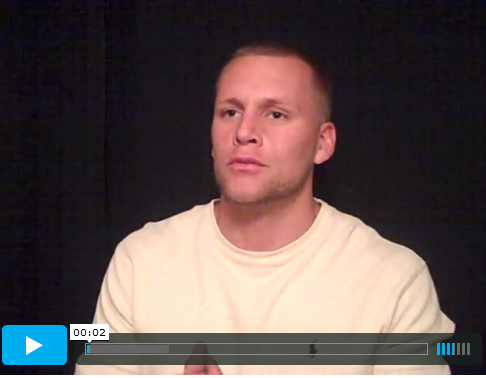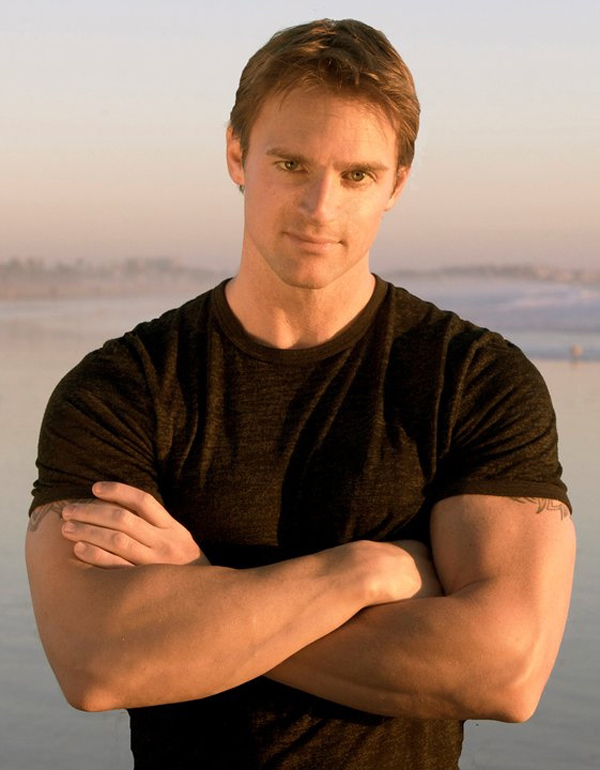LA: This is Luke Allison here with the CriticalBench.com weekly Muscle Building Expert Interview series. Today I’m here with Chris Barnard. Chris, how are you?
CB: Good, good, Luke. How you doing?
LA: Doing all right, man. I appreciate you joining us. We have a sort of special topic today that I know people are going to be interested in hearing about, Total Xplosive Training. Give us some background; talk a little bit about that.
CB: About the training itself or how it came about?
LA: Wherever you want to begin.
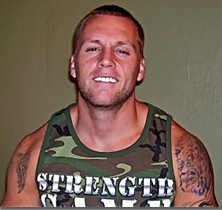 CB: All right. Well, basically, Total Xplosive Training was… Basically, I kind of just fell into it. I was training… I played football my whole life. I’ve played baseball my whole life, basketball, you know what I mean? Any sport out there, you name it, I kind of was trying to get my hand in anything growing up.
CB: All right. Well, basically, Total Xplosive Training was… Basically, I kind of just fell into it. I was training… I played football my whole life. I’ve played baseball my whole life, basketball, you know what I mean? Any sport out there, you name it, I kind of was trying to get my hand in anything growing up.
I really tailored-in in football and tried to pursue that after high school. I actually went to a junior college and ended up getting like basically a career-ending injury. I broke my shoulder in a game and I think I separated almost every tendon in the shoulder. And while rehabilitating, I really started to look into different types of training and how I could get my body back into peak shape and basically I wanted to take it to the next level. That’s every kids’ dream is to really use training, you know what I mean? Especially if you have the bad genetics, as they say, to make yourself something, get yourself to that NFL dream.
So, basically what I ended up doing was I started training with Elliott Hulse over here at Strength Camp, and I started doing a couple of different methods and reading online and figuring out all these things. And it wasn’t until I actually started to study it in school to where I started applying that knowledge into my training.
So, when I developed Total Xplosive Training, really what I was doing was I was preparing myself to play Division I football at the University of Miami. So, basically, I just took my workout, along with Elliott Hulse’s, you know, he’s got the meal plan and the Strongman… If you guys aren’t familiar with him, he does a lot of Strongman for football, and things like that. And I took my speed training and kind of just put it all in a pot and really tried to mix it up and make it work, basically for myself.
Well, what ended up happening was I got awesome results. I think I was like… After surgery I was probably like under 200 pounds. I was able to gain all my weight back, all my strength back. I got up to about 235-240 pounds and I was just pure muscle. My strength was through the roof. I was squatting extremely heavy. I mean, I was able to do like five plates for reps, you know what I mean? I was able to bench close to 400 pounds. And this was… We’re applying this to sport training. So, I know I’m not powerlifting numbers, but for sports training that’s pretty good. My 40 time was really reduced. I was able to run the 40 in a 4.58 and for 235 pounds, that’s pretty impressive. I could jump amazingly.
So, I mean, everything was just working for me. So, I though… In my head I was thinking, okay, this is just for me. So, when I was doing this, working alongside Elliott, he gave me the opportunity to work with some of his athletes. Well, my second guess was, okay, I’m just going to see what I can do with these athletes and get them the training that I was going through.
To my surprise, what ended up happening was, these kids who were kind of like weak and scrawny and didn’t really have a hope for getting to the next level, they all started becoming beasts in the gym.
That’s kind of when I just realized, wow, I’ve really got to start putting this stuff on paper and really got to start getting it out to some people. Because, I mean, it’s working really amazingly. Like, the proof is in the pudding, as they say.
 So, basically with the training, we’ll talk a little background on that, what we do is we basically start them off by giving them some kind of heavy, like high intensity plyometrics, something to really get their motor system working. The whole thing about Total Xplosive Training, the whole science background, I don’t want to give you the whole textbook hoopla. But basically for people who want to know, we’re training the nervous system. We’re not just training your muscles; we’re training movements. As an athlete and as any person in power training or any kind of athletic performance, they need to tailor-in certain movements.
So, basically with the training, we’ll talk a little background on that, what we do is we basically start them off by giving them some kind of heavy, like high intensity plyometrics, something to really get their motor system working. The whole thing about Total Xplosive Training, the whole science background, I don’t want to give you the whole textbook hoopla. But basically for people who want to know, we’re training the nervous system. We’re not just training your muscles; we’re training movements. As an athlete and as any person in power training or any kind of athletic performance, they need to tailor-in certain movements.
So, it’s not necessarily what the muscles is doing, how big it is, but it’s more or less what the muscle is doing for you on the field, on the court, you know, in the pool, whatever it might be that your sport is.
So, basically, like I said, that’s the plyometrics. We’re training certain movement patterns that you usually see in your natural sport. So, we can say, for instance, basketball, football, baseball, soccer, MMA, any of these sports, they’re obviously very different as far as the movements go, but then when you look at the underlying, the base features, a lot of it is still the same thing. For football, for basketball, for baseball, for MMA, you still need strong, powerful hits in anything you do. You still need a strong, powerful shoulder joint, everything you do.
So, what we do is we go ahead and we train that at the highest intensity it can go, which is power. It’s your force times your velocity. So, how strong it is times how fast you can move it.
So, we go ahead, like I said, we start off with a speed movement, like a plyometric or some kind of high velocity movement where we’re getting those base movements from each sport to really move, and then what we’re doing is we’re going to then in turn go ahead and train the strengths. So, we’re going to go ahead and move to strength movements where we’re really using some of that brute force to really move some heavy weight.
For instance, I think some of our workouts will consist of something, say like, a couple of different high intensity box jumps. And then, we’ll move into the gym and go ahead and train a couple different variations of the squat, deadlift, maybe some kind of bench press, really heavy.
That basically is the foundation. Like I said, I don’t want to get into too much scientific, some kind of hoopla for you guys, but just to give you the general background of Total Xplosive Training. Does that help you out, Luke?
LA: Absolutely. I think that’s a good start. It sounds a lot like you’re training the power and the velocity like skill work. Usually the idea is do skill work first before you get tired, and then you can sort of move heavy things slowly after that. Is that right? You’ve sort of got your priority…
CB: Yeah. Well, basically what… I mean, a lot of scientific people believe in something called PAP, which is post-activation potentiation. What that is is basically say you lift something heavy and then you go ahead and… A lot of people call it complex training, too. You’re lifting something heavy, you’re creating a stimulus, you’re turning on your muscles, basically. And then, you want to go ahead and use the same muscles to go ahead and do like a powerful jump. Because, what they’re saying is it’s activating your muscles. Now, you can go ahead and do a more high velocity thing.
What I’ve done and what Total Xplosive Training is, basically just flip it. I want to get the most powerful movement that you can, you know, the velocity, in the very beginning while your muscles aren’t fatigued whatsoever. Because, basically what happens is, you have motor units connecting to each one of your muscles. You might have, depending on the size of the muscle, depends on the amount of motor units you have firing. Well, with this, we want to go ahead and activate the most amount of motor units we can. So then, you’re going to get the most out of each particular muscle.
In addition, we want to go ahead and make sure that we are firing efficiency, as we could say, is on point. So, basically, they call it rate coding. We want to make sure that each one of your…the signal being sent for the muscle to turn on is as fast as it possible can. So, that’s why I went ahead and I trained the velocity first.
So, what we do is we, you know what I mean… Like I said, your muscle isn’t going to be fatigued whatsoever. We’re getting down to the correct motor patterns of the muscle to where it’s firing immediately fast and you’re able to get the most power out of it at that point in time.
Then, like I said, as we go into the gym, the strength component is basically to supplement the power. Anything you do… I mean, you think about any sport, unless you’re talking powerlifting or Strongman or something of that nature, you’re not going to be lifting a maximum amount of weight and taking you five seconds or something. Everything is a quick, sudden burst.
So, the strength is there to compliment the power output. And obviously, if the strength is a component of power, if we increase the strength, we’re going to increase the power.
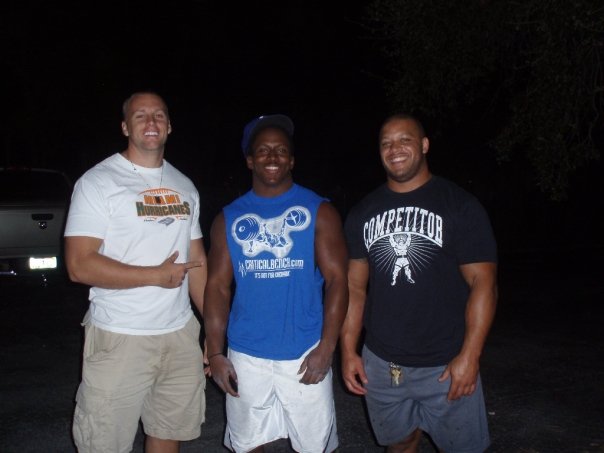
LA: It makes as lot of sense. I think people think of sports and they go, oh, speed is speed and you’re faster or you’re not, and that’s just not the case, is it? You can get faster and jump higher and do all of those things. I think you’re certainly an example of that.
CB: Right, exactly, exactly. Well, yeah, the thing is, like I said, when I got a handful of athletes, I, myself, actually was somebody who… There’s this aura going around that if you have bad genetics you can’t train speed. And I kind of just grew up with that. I saw in my head everybody said… I remember through school, the gym teacher would tell us that. So, I mean, either you’re born with speed or you’re not, and that seems to be the belief that everybody grows up with.
Well, me growing up with that, I wanted to figure something else out. Now, don’t get me wrong, genetics does play a role. I mean, if you look at kids on the playground, and you take two five-year-olds, one of them is going to be faster than the other. You’re going to look at it and say, okay, did one train harder than the other? No. I mean, there is genetics played in every aspect of our life. But, for us to say that genetics can’t be manipulated, or for us to say that training cannot improver your speed, I just… I think that’s a total false statement.
LA: So, you’re trying to give people hope, too. You’re not trying to put people in boxes and say you can’t do this and you can’t do that. Work hard, see what happens.
CB: Exactly. Because, like I said, I was once the underdog. I, myself… I mean, I’m not coming from reading this in a book and trying to tell somebody they can do this. I actually did it myself. Like I said, I had a career-ending injury. I went ahead and I came back and I got on the team for one of the most prestigious schools, you know, out there for college football, the University of Miami.
So, like I said, I took my 40 time from high school, when I was like 180-pounds, from probably like a 5 second 40, and I went ahead and I brought it down to a 4.58, which is pretty fast if you’re watching the combine these days. And that’s just through training speed and strength.
So, what I felt is…what I tell everybody is, there is numerous ways that you can manipulate, depending on what you want to do. And I think that, like you said, if I’m giving people hope, they’re able to understand it can be trained. It’s out there. It’s just what are you willing to do to get that?
LA: Right, and that’s also a matter of if you’re not satisfied with the information you’re getting from your high school program or your college program and you think about changing, look at what Elliott’s doing, look at what Chris is doing. This is serious stuff.
Talk about some of the equipment that you use. Get into some of that. Give people an idea of sort of what this might look like if they pick up the program.
CB: Okay. Well, basically anything that I have in the Total Xplosive Training you can acquire at any gym. I made it with the thought of thinking, okay, there’s going to be those high school athletes, there’s going to be those older guys who want to get back in athletic shape, because obviously everybody wants to look like an athlete. So, I said, you know, it’s nice to have a gym like Strength Camp where we have tires and all kinds of stones and stuff like that and pegs. But, the average, every-day guy isn’t going to have these kinds of things available to him.
So, what I said was, what I’m going to do is I’m going to create this to where wherever you are, I’m going to give it to you to where you can do it in a normal gym setting or you can do it in… Say you have a barbell and some weights in your back yard. You can take care of it the same way. You’ve just got to be a little bit creative.
The most things that I think that we have, you know, people come to me and say, oh, I don’t have boxes for box jumps. Well, I remember being in high school and jumping off of a trash can or jumping over stuff like that just to go ahead and… Because, I, myself couldn’t afford the boxes that they make just for jumping. But, people realize you don’t really need those kind of things.
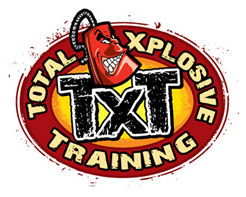 LA: Picnic tables. Jump on picnic tables. That’s what I always do.
LA: Picnic tables. Jump on picnic tables. That’s what I always do.
CB: There you go, exactly. Well, I remember we started doing it off my own truck. So, I mean, people can’t really say too much about not having the right equipment. Like I said, as far as the weights go, a squat rack, a bench, anything with a barbell with some weights on it, is sufficient enough. I think I do have a couple of machines connected in with the training, but they’re nothing more than like a cable or something like that that you can find in your everyday gym.
LA: That’s good. I think that’s what people need to hear, because I think they sometimes get confused about well, if I’m going to be serious, then I have to have all this serious stuff. And that’s kind of not how it works. You have to work your way up to needing all of that. Right?
CB: Right. Exactly. I mean, people think that you need to jump into it and have the best things. And honestly, like we always say, I could give you the best workout in the world, but if you follow it 50%, you’re going to get 50% results. I could give you the worst workout in the world, and I you follow it 100%, you’re going to get great results.
The thing with TXT is, the workout I’m giving you is tailored in for you to get the most out of your athletic potential. So, if you go at this 100% and you have the right setup in the off season for your upcoming season, there’s no way you can lose with it. You’re definitely going to go ahead and increase your athletic performance.
Like I said, I’ve had a basketball player, I’ve had a baseball player, I’ve had a football player. I put them all to the test with it. I was nervous because I said, you know, everybody says one key doesn’t fit all locks. So, I said, okay, this is my training. It’s not going to fit everybody else. Let me go ahead and give it a shot.
It’s kind of like I had some lab rats. Well, each one, you know, the basketball player increased his vertical jump and was able to move quicker and more efficiently on the court. The baseball player went from not hitting one homerun to hitting…I think he hit seven that season. And then the football player was just completely just a beast and went ahead and made the University of South Florida team as a walk-on.
So, I mean, each and every player went ahead and improved their athletic performance, and it’s all from the base foundation of increasing your explosive power.
LA: And that’s exactly what people… I think when people are in the market, that’s what they want to hear, is this has worked. It’s something you thought about and then you did it and then it worked. It’s been in all of the different phases.
Give people an idea how long of a program it is, how many days a week. Go into a little bit of detail, if you can, on that.
SC: Yeah, sure. So, basically, Total Xplosive Training is a three-phase. It’s a base phase. And what we do there is the first month we go ahead and create a foundation. So, what we do is we make sure your hip joint is completely stable and able to go onto the next phase, which is developmental phase. And there, we start developing certain aspects of your game and we increase the intensity and drop the volume. And then, after developmental phase, we go into the peak phase, which is the third and final month. And what that does is basically we increase the intensity and we drop the volume and this is basically what it says. We’re going to be peaking. By now, your numbers are going to be extremely high. You’re going to be breaking all your one-rep max records, your personal records. You’re going to be protecting everything at this time and it’s going to be getting you ready for that season.
So, to sum it up, it’s three-phase, three-month. And each one conjugates with each other so you’re moving slowly into the next phase of being able to get the most out of your training.
As far as how many days per week, we go ahead and we train four days. There’s a lot of…how should I say it? People use these terms with each other, over-reaching and over-training. I think a lot of people get this mixed up with what they’re doing in their training and I believe that over-training, basically, if you’re recovering enough, there won’t be over-training. So, what we do is we give you complete recovery sessions, the complete nutrition to follow and exactly how much sleep you should be getting as well.
So, what we do is we train four days a week and it’s very intense. But, like I said, we do have the recovery and the nutrition included. And so, basically, with the four days you’re able to take off of each movement pattern or muscle being used so that you’re able to develop the next one. Kind of like what they call like a block periodization micro-cycle. So, you’re not using the same muscle each day, but you’re able to go ahead and improve on them throughout the week. If that makes sense.
LA: Oh, it makes sense to me. I’m just making sure that we cover it in enough detail for people that might not. Block periodization, I think that was what you described before, where you have the different sort of monthly blocks, which is just a group of training that’s similar, but that also builds on itself. Because, you’ll be going… You’re not trying to go like three months of distance in one month. You’re trying to go three months of distance in three months.
CB: Right. Well, there’s so many different, you know, after studying this, there’s so many different methods of periodization. I started looking at some of the ones, obviously the traditional western linear, where you’re continuously moving up. I looked at block periodization where you use certain effects, reciprocal effects, to go ahead and build on top of each other. And I’ve also…what I’ve adapted from Elliott Hulse is the Russian conjugate.
So, basically what I try to do is just basically mix these up to where I’m using each one, a particular little piece of my favorite part of each method and building it into its own training program.
So, like I said, it will move you through certain phases like say block periodization. But, at the same time, you are staying strong, you are staying fast, you know what I mean? Because it is three months.
People know, and athletes know, how important this off-season is to them. Like, your off-season is almost everything, because you want to come back that next season and you want to be that person. You want to be that athlete that just stuns everybody and says, you know, look what I did this off-season. I turned my life around, I turned my game around and I’m ready to go.
So, people know that the off-season is short, but they want to get the most out of it. And that’s exactly what Total Xplosive Training does.
LA: And that’s the key. I absolutely want to emphasize that, because the difference between an athlete and someone that’s just lifting is, an athlete has a sport, and that person has a very specific period of time where they can have an off-season and then they also have a specific period of time where they have to get back on the court or back on the field.
CB: Right.
LA: It makes all the difference if you do the right thing.
You’ve mentioned MMA fighters, basketball players, football players, anyone else you have experience working with or who you think Total Xplosive Training would be appropriate for?
CB: Like I said, I’ve been… I hate to say this, but even before the whole football thing, I remember in high school I worked at World Gym and then after that I was a trainer at LA Fitness. I don’t like to bring those out, because I don’t like the fashion show gyms too much. I like kind of the hardcore stuff. But, I’ve been working with… You know, I’ve always been attracted to the athletes, because I, myself, have always been one. And I just was able to connect. I understand the intensity they want to go. Now, I’m not taking anything away from the average day lifters, because there are those guys out there who used to play the sport and realize that I’m not going to get anywhere unless I train like an athlete. That’s the beauty about TXT.
I apply TXT to the average-day guy. And what they do is they end up looking back like they used to look when they were playing football or they were playing basketball. You know, that look that they want to get when they’re 30 or so years old, and they realize wow, I can’t just lift, I’ve got to go back to training like an athlete. That’s how I’m going to look my best.
In addition to that, I’ve worked with, like I’ve said, I’ve worked with basketball players, I’ve worked with baseball, football, soccer, swimmers, actually. That was a new one for me. MMA was pretty cool because those are some of the most… I thought football was pretty intense, but MMA guys really love to push themselves. Let me think here, just an overall of sports. I worked with a boxer before, I think.
And the funny thing is, there really isn’t a sport that I’ve helped people out with… You know, I’m actually working with some people in rugby and lacrosse right now, too, as well. But, like I said, there’s not a sport that can’t benefit from it because there’s not a sport that doesn’t have an underlying movement that they can’t… Now, I understand that sport-specific training, meaning if you’re a quarterback, you’re obviously going to throw the ball. If you’re a pitcher you’re going to be practicing your pitching motion and your mechanics. That’s sport-specific training.
But, besides that, each sport has their base movements to where they’re going to want to get the most explosive power and strength out of their body that they can. And by improving that, it’s going to improve every aspect of your game.
If I take a pitcher and he just throws all day long, he’s going to get his mechanics down. Now, say I take that same pitcher and go ahead and apply Total Xplosive Training to him and make him more powerful. Now you see his hip, now you see his rotational muscles, basically his obliques and transverse abdominis getting extremely strong. So now, he’s able to throw that ball a lot harder and a lot more powerful. That’s all it’s doing. It’s complimenting your sport-specific training to basically increase your overall athletic performance.
LA: The two things that I think of when you just said that was, the ability to decelerate, to slow down after you’ve sped up, and then it’s the ability to change direction. And those seem like the things that go, you know, everyone is interested…or should be interested in that if they’re interested in performance. Is that right?
CB: Right. And that’s the whole thing about explosive training. You want to be able to stop… It’s all body control. That’s what athletics are all about. I don’t tell somebody to be the biggest and the craziest looking athlete, but if their body is completely under control at all times, that’s how you train your body, your nervous system to move efficiently and to move as swiftly as possible.
So, I mean, the biggest athlete isn’t necessarily the strongest. So, what you’re doing here is you’re basically teaching an athlete to come to speed, you know, to get the maximum speed as quick as they can and to stop as quick as they can, or make that move as quick as they can.
Say somebody in basketball is crossing-over. Say a baseball player is hitting a fastball, or say an MMA fighter throwing a punch. It’s all moving as fast as you can. As you look, some of the most…the best players in each sport, in every sport there is, I guarantee you they’re usually the fastest or most powerful player. There’s something about them that’s more than the rest. Yeah, there’s technique, obviously involved. But, like I said, the best ones, the best of the best, they usually have, like you said, those two. And that equals they’re the most explosive.
LA: Absolutely. Make it simple. Don’t make it harder than it needs to be.
CB: Right. Exactly.
LA: Fair enough. Chris, if people are interested in getting the program or sort of getting some more information, give them an idea about where they can go and sort of what they can find.
CB: Yeah. Basically, I have it on the website, it’s at TotalXplosiveTraining.com. I believe that Mike here will have a link to it in on his thing that you guys could check it out. I urge people who are serious about their athletic performance to definitely give it a shot this off-season. It’s definitely something to look into. And like I said, I’m always available. I’m not somebody that’s trying to be one to make a quick dollar or anything like that. I really want to help people out.
So, even if… I want people to email me. I love working with people. I’m working with people all across the world right now. And I, myself, am also training, got some things in the woodworks to go ahead and do. So, I just want to create, as far as like a community, to basically help athletes out to get them to their goals. I think that would be pretty neat.
LA: Sounds great. Chris, I appreciate the time. Thank you again.
CB: Luke, thank you very much. I appreciate it.
LA: All right. Take care.
CB: Have a good one. Bye bye.
Click Here To Get Your Copy
Luke Alisson of CriticalBench.com Interviews Chris Barnard



